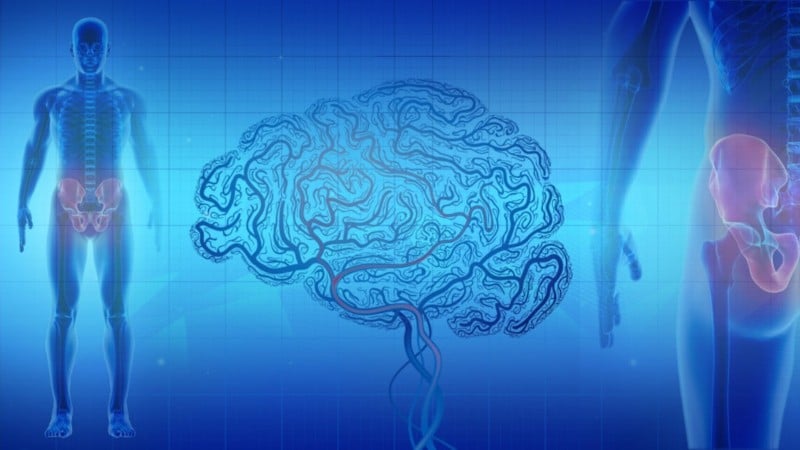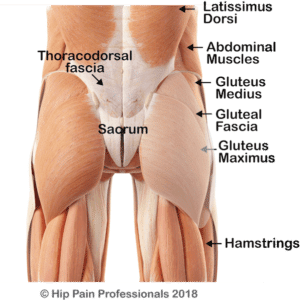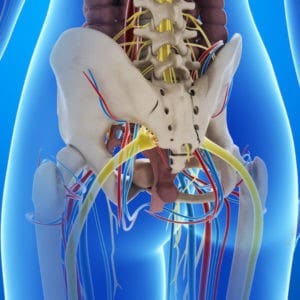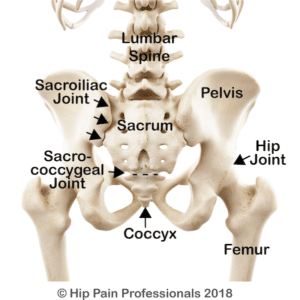What is Pain?
Pain is an experience that the brain creates for the purposes of stimulating you to change your behaviour or seek help for a perceived problem with your body. Irritating or potentially damaging stimuli in your body (like high levels of pressure, tension or extremes of temperature) activate sense receptors (danger sensors) in the area. Signals from danger sensors in the body travel through the nervous system to the brain. Here the information is processed and the brain sometimes (but not always) produces a pain experience.

What are the ‘danger sensor’ symptoms?
These danger sensors send warning signals to your brain, and your brain then decides whether the signals are dangerous to your health. Your brain uses lots of other stored and real-time information to make this decision, for example:

Figure 1: Bones and joints of the hip, pelvis and lower back
- whether you have had an injury to this area before
- whether you know someone who has had problematic pain or injury in this area
- whether an injury in this area is likely to impact substantially on your life (ability to work, play sport, stay healthy, interact with family and friends)
- what you have read or watched about the problem
- what others have said about the problem (friends, relatives, health professionals)

Figure 2: ‘Soft tissues’, non-bony structures, such as muscles and the tendons that attach them to
- if you are unwell with a cold or flu
- if you haven’t slept well
- if you are having a good or bad day
- if you are scared, fearful or worried about what your pain might be or might mean
- if it’s raining or sunny, you are surrounded by harsh noise or calming music, pungent or pleasant smells …
After much scientific study, we now know that pain is not as simple as we once thought.
It has been clearly demonstrated that:

Figure 3: Nerves that run through and around the hip & pelvis. And pelvic organs or blood vessels, or other health issues masquerading as hip pain
degree of pain DOES NOT EQUAL degree of damage.
Pain is rather a reflection of how dangerous the brain perceives the situation to be and how important it thinks it is for you to do something about it, based on subconscious considerations. The brain truly is amazing!
Persistent or cumulative signals from the danger sensors in your body, will usually trigger a pain experience, but at varying levels for each individual. Danger signals may come from many different structures around the hip and pelvis.
Pain experienced in the hip, groin and pelvic region may be related to:
- The bones and joints of the hip, pelvis and lower back (See Figure 1)
- ‘Soft tissues’, non-bony structures, such as muscles and the tendons that attach them to bones (See Figure 2)
- Nerves that run through and around the hip & pelvis (See Figure 3)
- And pelvic organs or blood vessels, or other health issues masquerading as hip pain








